
Nasal plastic (two other Greek words formed, which makes sense "nose" + "plastic" and therefore translated as a "plastic nose") part of plastic surgery, which deals with congenital (obtained in embryogenesis) and correcting nasal deformation.Simply put, this is a plastic surgery to correct the outer and internal errors of the nose.A distinction should be made between open, closed and non -surgical nose plastic.In most cases, aesthetic and functional errors are eliminated through surgery.
The correction was initially carried out only with injuries, serious illnesses and noticeable congenital errors.Later, plastic surgery began, most often according to aesthetic indications to change the appearance of the nose.For example, remove the hump, reduce the mountain, lift the nasal bridge, reduce the nostrils and so on. A little story. The ancient world surgeons for the first time performed nose sculpture. It was mentioned in the ancient manuscript of the "Ayurveda" from the reason.1000 BC This document seizes most of the facts related to antiquity medicine.The restoration of the facial units was required by the wars and the people who have been mutilated during the execution of the court.At that time, transplantation began its history.As a correction, the skin of the skin or forehead skin was taken.Indian technology has evolved over time so that even European doctors in the Middle Ages are successful in patients.
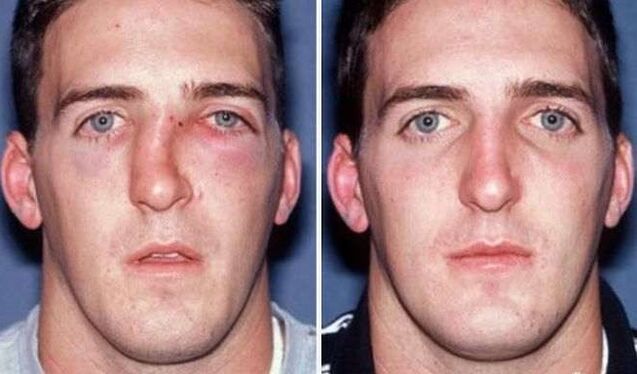
Indications of nose sculpture
Rinoplasty is made according to medical and aesthetic indications.In other words, a person just doesn't like what the nose looks like.It may be a hump or curve, too large or small, wide or narrow, narrow or long, large or asymmetric nostrils.And it may happen that a person's nose is twisted since birth or blow (although he often cannot breathe and requires an operation to restore the nose of the nose).There are frequent cases where surgery is needed to correct appearance errors after the first unsuccessful plasticity (this is considered to be the most difficult surgical intervention).The operation is only permitted for persons under 18 (if there is no urgent medical indication).This is due to the fact that bone tissue develops until the age of eighteen and the cartilage is up to twenty.This is the reason why the most appropriate age for nose plastic for 20-35 years.Below are the most common problems that men and women turn to nostril surgeons.
Nose is a puch
The essence of the problem is that there is a small hump on the back of the nose that makes the nose massive and the face is stupid and dissatisfied.Cause: The error may be congenital, may occur after injury, or may have the result of previously unsuccessful correction.The removal method: In most cases, in the case of plastic surgery, the hump is removed by a closed or open method with general anesthesia.If the rear of the nose is too wide, the nose plastics should be performed with osteotomy (fixing the back bones).

The wide back of the nose
The point of the problem is that man has a very wide nose that makes the face huge and rough.Reasons: Error may occur after injury, congenital or fail to remove the hump.Method of resolution: Open correction with osteotomy during general anesthesia.The essence of this technique is to remove part of the bone in the back and then bring the side parts together.
Nosy's nose curve
The essence of the problem is: the back of the nose is asymmetrical.Because of the curvature, one often cannot breathe at all.This problem refers to functional indications for surgical correction.How the error appears: in most cases, this is the result of a fracture.Although the nasal selection may be curved as a result of intense growth in the skull bones.Is it possible to straighten your nose? In most cases, the operation to level the partition (septoplasty) goes through a closed method during local anesthesia.The essence of the operation is shown in the figure below.If this is not enough, in such cases, rhinoseptoplasty is used (when the distribution correction is combined by eliminating other errors in the nasal shape).In cases where the injury is quite severe, reconstructive plastic (more severe surgical intervention, which is often performed in several stages), this plastic surgical surgical methods after serious nasal injuries and in full deficiency.In this case, the surgeon is responsible for restoring bone cherries and skin integrity.
The shape of the nose saddle
The essence of the problem is: the nose is too low.Which makes the shape of the nose similar to a saddle in the profile.Cause: The error can be congenital and may occur as a result of injury if a part of the bone or cartilage is damaged.How can you change the situation? The correct shape is restored by transplanting a costly cartilage, cartilage from Auricle (on the outside of the ear) or implanting a synthetic implant.
Big nose
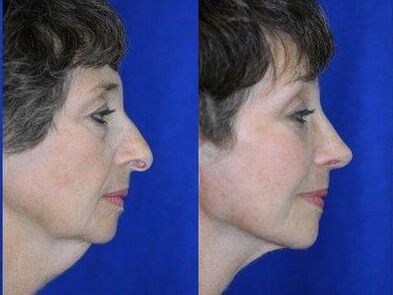
The essence of the problem. The too large (long or wide) nose disproportionately makes the face disproportionately.Most often in such cases, the mountain is very thickened.Cause: The error is most often congenital. How do they solve the problem? The nature of the surgical intervention depends on the cause (in some cases, the tip of the mountain should be reduced, in others the nasal wings are reduced, but sometimes the hump should be removed).Before you decide that plastic surgeons can often use 3D computer modeling.This allows you to see the face appearance even before surgery.
The problematic shape of the nose of the nose
The essence of the problem is that the proportion of the correct face is violated due to the poor shape of the nasal tip.For example, you may have:
- Narrow
- Windy
- Round (with nose potatoes or onions)
- Lowered (crocheted)
- Raised (kurting)
- Duplicate
How do they solve the problem? The course of the operation is rethought depending on the type of problem.
- To reduce the wide mountain, it is sufficient to bind the large cartilage dome, in others the truncated of some of the cartilage tissue.
- A round meat tip should be removed more often in part of the cartilage followed by fastening domes and often reduces the wings during surgery.
- The bidded tip of the nose should install a transplant from the patient's own cartilage tissue taken from the ear or in the rib or from the synthetic material.
- The mountain can be too narrow due to disorders caused by the stiffness of the cartilage's lateral legs.They are confirmed and transplantations are also used.
- When correcting the lowed tip of the nose, the surgeon removes part of the cartilage and sews it in a new position.
- Another operation of the operation is to strengthen the nasal columella to ensure good support of the mountain.
- There is a third method connected to the truncation of part of the inner muscle, after which the mountain is pulled upward
- There are several ways to eliminate kournostability, which includes the installation of its own or synthetic transplantation at the end of the mountain or nasal bridge.

Big or different nostrils
The essence of the problem is that the disproportionate size of the nostrils (too small or too large) or significant asymmetry can interfere with harmony and worsen the appearance of the face.How to eliminate the error? The process of operation depends on the source of the problem.They can sew the nose of the nose, need to strengthen the retired cartilage dome, and in some cases it is sufficient to align the nose septum.It may occur to raise or reduce the long tip of the nose
The contraindication of nose sculpture
Absolute contraindications in which the nose plastics should not be performed in any case:
- Diabetes I, II.Type
- Coronary heart heart disease and other diseases are severe cardiovascular diseases in which general anesthesia is contraindicated
- Meningitis, tuberculosis, gonorrhoea, brucellosis and other severe viral infections
- System diseases: Red Lupus, HIV, Lepra and others.
- Allergic reaction to anesthesia components.
- Chronic diseases: liver cirrhosis, hepatitis, etc.
- Cancer
- Bronch
- Blood coagulation problems
- Mental illness
Relative contraindications (nose plastic can be done when the disease is healing) is connected:
- 18 years (correction is acceptable only in the most extreme cases)
- Aggravation of inflammatory diseases (sore throat, frontal, sinusitis, otitis medium)
- Ars, Sars
- Skin diseases
- Age after 50 years (surgery occurs when there are no chronic diseases with absolute contraindications)
- Pregnancy, breastfeeding, menstruation
How the nose scraps pass
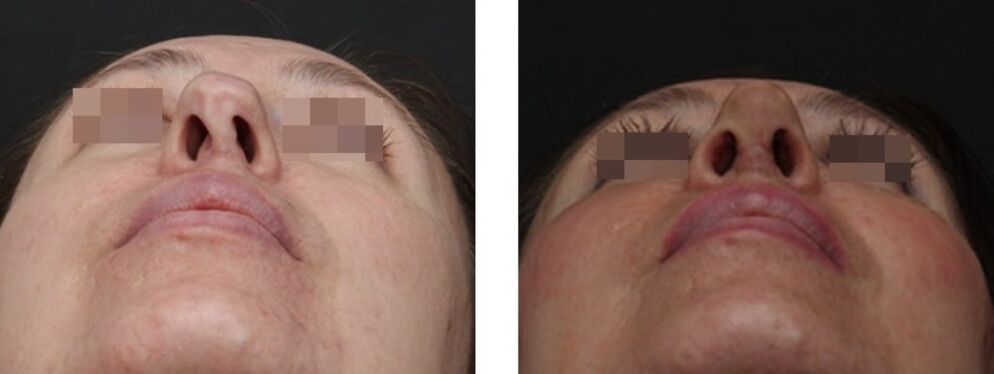
Rinoplasty is only performed during general anesthesia.The duration of the procedure depends on the complexity of surgical intervention and varies between 30 minutes and 2 hours.During the first consultation, the doctor offers 3D modeling to fully understand the patient.This helps to show a person what the result is expected.When you imagine it turns out to be easier to make a conscious decision.Before surgery, the patient should hand over a general and biochemical blood test and a general urine test.It is also necessary to perform a blood test for HIV and analyze protrombin blood test.If necessary, you should check with the profile doctors if necessary.Patient preparation during the pre -surgery period contains the following recommendations:
Two weeks before the operation:
- Refuses to consume alcohol (especially carbonated)
- Do not take blood thinning medicines
- Don't sunbathe
- Non -smoking
One week before the procedure:
- Get all the necessary medication
- Minimize the use of cosmetics
- Buy contact lenses to replace glasses (for people with bad vision)
10 hours before the operation:
- Do not drink anything (or drink the minimum amount of liquid)
- Do not use perfume and cosmetics
- Make clothes that you don't have to remove over your head
- Remove the jewelry
Rehabilitation after nose sculpture
Full restoration of the tissues is done one year after the nasal plastic after surgery.In order to accelerate the healing process of tissues and avoid the occurrence of unwanted consequences, it is extremely important to strictly monitor your doctor's recommendations during the postoperative period.In the first days after surgery, the patient causes discomfort because he has to wear plaster and tampons in the nose.This means that you can breathe only with your nose, your mouth often dries.The temperature can be increased.I want to drink.It is difficult to wash and wash your teeth.Remove the gypsum and remove the TOURNUS from the nose before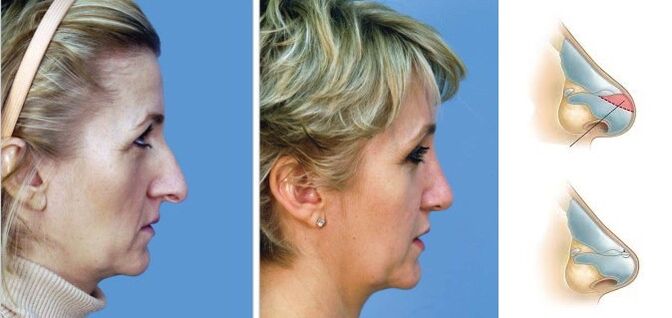 Impossible.This can lead to undesirable deformations, swelling growth, and increased tissue healing problems.
Impossible.This can lead to undesirable deformations, swelling growth, and increased tissue healing problems.
The first four days of edema will increase and then begin to pass.Cold compression is recommended on the first day to withhold swelling.After the plaster bandage has been removed for about two weeks, people will continue to experience the inconvenience caused by the nose edema.Perhaps the loss of some sensitivity in the area of surgical intervention.The bruises are still visible.At this time, breathing with your nose is easier. During rehabilitation during the first week, surgeons for nasal poplasts recommend that you follow the following restrictions:
- You can't eat too salty, spicy, acidic and other simple, determined foods.
- You cannot translate your head, bathe, lift weights (including children or pets at 5 kg) and charging.
- You only have to sleep on a high pillow on your back.
A person is able to go to work two weeks after surgery, although he has to avoid heavy physical work.Therefore, it is best to plan a vacation for this time in order to provide complete rest and relaxation for quick healing.
Within two months after nose plastic:
- The nasal cavity should be rinsed regularly
- Cannot be exposed to serious physical effort, sports or to go to the pelvis
- Can't drink alcohol
- You can't smoke
- Reduce or eliminate the use of coffee
- Visiting a bath or sauna is forbidden
- Avoid direct sunlight on the face
- You can't wear glasses.They affect the shape of the nasal bridges, so you have to wait until the bone is completely healed.
Possible complications after rhinoplasty
It is considered a normal condition if there are bruises around the eyes immediately after surgery and swelling.These small blood vessels are direct consequences of damage during surgery.After almost two weeks, the primary edema and bruising must go down.
Early complications include the following problems:
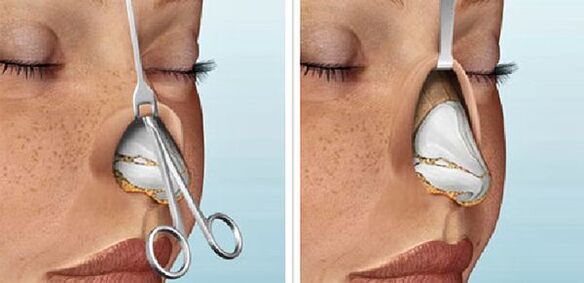
- Bleeding
- Hematoma
- Very strong edema
- Tissue
- Wound infection
- To discover the seams
- The numbness of the nasal tip
If these problems appear, you should turn to the participating surgeon in time and start treatment in time and prevent them from developing.
Late complications include:
- Perhaps the appearance of bone corn
- Keloid scars formation
- The opinion of the nasal tip
- Bifurcation of the nasal tip
- The shape of the nose saddle
- The curvature of the back of the nose
- Asymmetry
- The appearance of a hump on the nose
- The perforation of the partition
- Hard breathing
Most of the complications listed above can be eliminated by repeated operation.Some occur due to the surgeon's mistakes, others because of the malfunction of the patient's inadequate behavior, and some occurrences are explained by various characteristics of the human body.






















